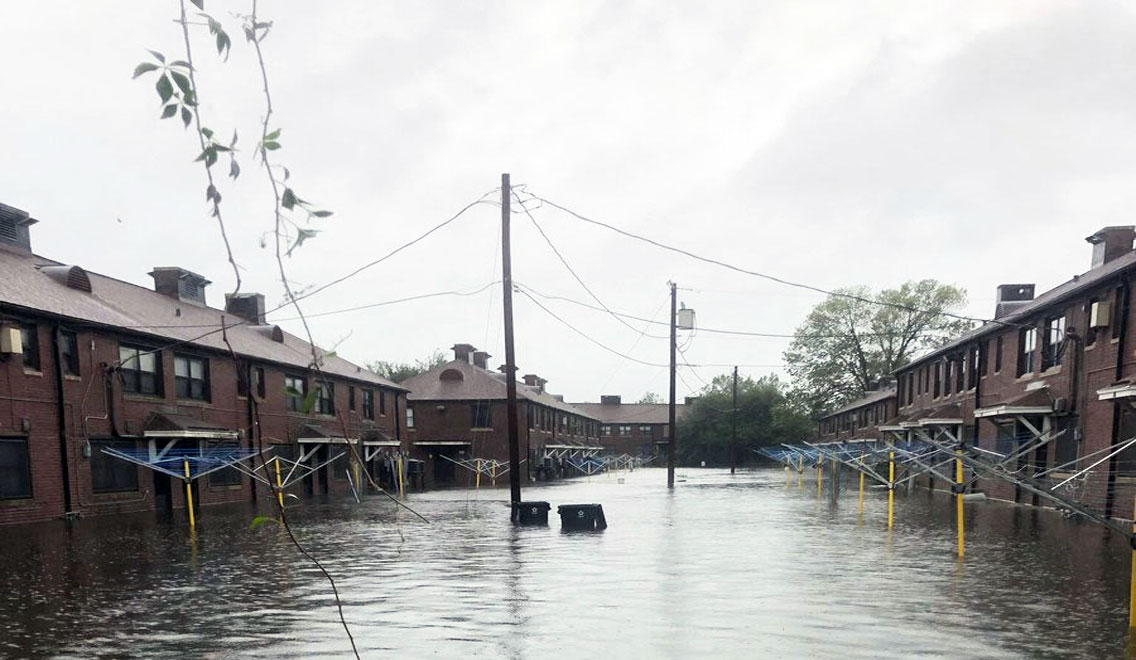Affluent Florence Survivors Are Already Back To Normal While The Hood Is Sittin’ In The Dark
The aftermath of Hurricane Florence has shed new light on the effects of income inequality and racism.
A Guardian profile of Hurricane Florence survivors highlights how relief differs among those of different social castes. Three generators are the only source of electricity for the poor, black residents of Wilmington, North Carolina’s Northside neighborhood. Shacory Blanks and several relatives are staying in her mother’s apartment because she’s the only family member with power. Their only source of groceries is a nearby convenience store that mostly peddles beer and wine.
Monkey Junction, a wealthy, mostly white neighborhood up the street, is an entirely different scene. Most of the power is back, and residents are living like nothing ever happened. Two grocery stores, including a Whole Foods, a gas station and Dunkin’ Donuts have reopened.
Blanks doesn’t know when she will be able to go back to work, while Monkey Junction resident Peggy White was pretty sure she’d be able to resume a job she doesn’t need within a few days.
“It’s my retirement job. I was a teacher,” White said. “I’ve gotta start living a normal life while you can and go back to work. I do it for fun.”
A similar contrast exists in New Bern, North Carolina, about two hours away, according to PBS.
New Bern’s affluent downtown area has already started its recovery effort, but inhabitants of Trent Court, an almost 80-year-old housing project a few minutes away, were sitting in the dark. Even during regular storms, the complex is susceptible to flooding due to its proximity to the Trent River.
According to Sabrina Bengel, a representative for the New Bern Board of Alderman, there wasn’t an evacuation plan for the mostly black, poor residents of Trent Court.
“I called on Monday and talked to the executive director. And my first question was, can you please tell me what your evacuation plan is for Trent Court? And he said, ‘Well, we don’t have an evacuation plan. We have a hurricane readiness plan,’” Bengel recalled.
Residents were reportedly given a sheet of paper that told them to be careful in the current hurricane. Most did not have the funds or available transportation to evacuate.
“I said, well, that wasn’t acceptable,” Bengel said. “I felt that [a hurricane readiness plan] wasn’t strong enough. We knew it was going to flood. We knew the waters were coming in, and I felt very strongly, if nothing else, in the front rows, the rows closest — the buildings closest to the water should be evacuated, period.”
Trent Court eventually got its lights back on, but residents may not be living there much longer. Given that the housing is on valuable riverfront land, there’s talk of tearing it down and building condos there instead.
Alderwoman Jameesha Harris sees gentrification on the horizon.
“For people to feel like this is going to get tore down and they’re going to put up condos and stuff and sell it to the highest bidder that doesn’t look like them, yes, I’m definitely against that,” Harris said.
Although the electricity is back, Trent Court residents want to know where their elected officials are, and why they haven’t done more to help. The people of Northside are wondering the same. Northside resident Joseph Cobb summarized the division:
“They don’t want you to come up. Look at where you at right now. All the white people around us got power. We got none,” Cobbs said as he tended to one of the generators. “No one comes to help us. So we help ourselves.”
Blanks co-signed his observation.
“That’s just the way it always is. Their neighborhoods get fixed up first around here; their streets get fixed up first around here,” Blanks said of her city’s white residents. “When the power goes out, they go to them first.”


